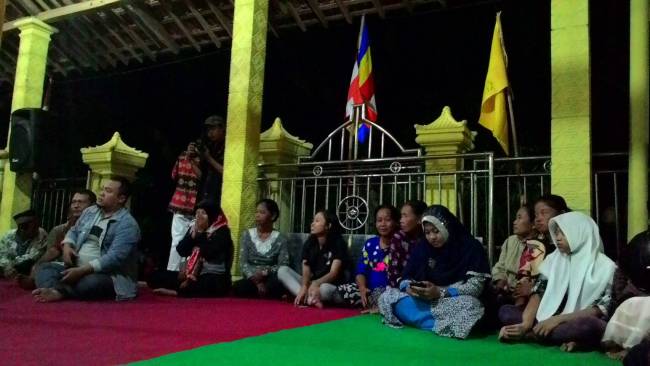Klepu is the name of a village situated about one and a half kilometers from the capital of Sooka Subdistrict, 27 km away from the capital of Ponorogo Regency in East Java. This village is home to 2,721 residents who practice various religions, including Kejawen, Islam (both NU and Muhammadiyah), and Catholicism. The religious experiences of the residents of Klepu are unique and varied. Prior to 1965, the majority of Klepu’s inhabitants followed Kejawen Islam, which they referred to as “Natbiti” Islam (circumcision-wedding-death Islam). This meant they practiced Islam only during circumcision, marriage, and death ceremonies. Only a small number of Klepu’s residents adhered to traditional Islamic teachings, particularly those who lived around the old mosque in the Ngapak Hamlet, under the guidance of Kiai Kurdi.
After the events of 1965, the religious landscape underwent a drastic transformation. Some individuals in Klepu began attending the mosque to learn and perform the five daily prayers, possibly due to fear of being associated with communism (PKI). Alongside those who had been devout followers from the start, a small portion of them eventually aligned with NU and Muhammadiyah in Klepu. Another group, led by the then-head of the village, Soemakoen, established connections with the Catholic church in Madiun and eventually became dedicated followers of that faith.

This shift marked a new phase in the social configuration of the Klepu community. Roughly half of the population became Catholic adherents, while the rest remained predominantly Kejawen practitioners within the Islamic fold. These individuals were the “Natbiti” community, who once collectively visited the mosque to evade post-1965 political pressures, returning to their original identities once the political situation eased.
However, amidst these changes, one constant aspect remained in the Klepu community – their sense of togetherness. They continued to collaborate in building places of worship regardless of religious affiliation, celebrated Idul Fitri together, and shared both joys and sorrows as a unified group. Evidently, this sense of togetherness also led to the exclusion of DDII (Dewan Dakwah Isamiyah Indonesia) in 1999, as its teachings were perceived as promoting religious dogma rather than fostering interfaith harmony, which was highly valued in Klepu. For them, religion was a practical and empirical experience, not merely a collection of enigmatic theories.










